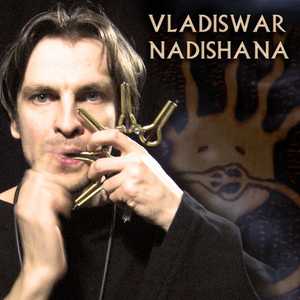
| Trackimage | Playbut | Trackname | Playbut | Trackname |
|---|---|---|---|---|
| 84641304 | Play | Aeyolio(version with bagpipe) | 00:00 Tools | |
| 84641305 | Play | Shu Khur | 00:00 Tools | |
| 84641306 | Play | Aeyolio (version with bagpipe) | 00:00 Tools | |
| 84641307 | Play | Hulusi | 00:00 Tools | |
| 84641320 | Play | Particles | 00:00 Tools | |
| 84641309 | Play | Зимняя | 00:00 Tools | |
| 84641308 | Play | Cat's Love Song | 00:00 Tools | |
| 84641313 | Play | Riding North | 00:00 Tools | |
| 84641322 | Play | Tales of Ro | 00:00 Tools | |
| 84641310 | Play | Unregular Dance | 00:00 Tools | |
| 84641311 | Play | Kuckhermann, halo-duclar duo @ Hang Festival, Moscow | 00:00 Tools | |
| 84641318 | Play | Zero Density | 00:00 Tools | |
| 88631079 | Play | Infinite Approximation | 00:00 Tools | |
| 84641321 | Play | Takku ta tei | 00:00 Tools | |
| 84641314 | Play | Asymmetric Beauty | 00:00 Tools | |
| 84641315 | Play | Armin Metz *Gurgang*, bass - jaw harp duo. | 00:00 Tools | |
| 84641312 | Play | Umbetombi Embio | 00:00 Tools | |
| 88631081 | Play | Tarznauyn-Hijaz theme | 00:00 Tools | |
| 88631080 | Play | Saekhar | 00:00 Tools | |
| 90314245 | Play | Nadishana, Manu Delago, Loup Barrow, Thomas Bloch (hang & crystal organ) LOCUS SOLUS Orchestra | 00:00 Tools | |
| 84641316 | Play | Jae Koro-Nim | 00:00 Tools | |
| 84641317 | Play | Sygyt Hoomey | 00:00 Tools | |
| 84641319 | Play | лаосская флейта Тсаай Нплайм | 00:00 Tools | |
| 84641323 | Play | Shu-Khur (hang drum) - Nadishana-Kuckhermann-Metz | 00:00 Tools | |
| 84641324 | Play | Garrahand solo | 00:00 Tools | |
| 90314246 | Play | Tsaaj Nplaim | 00:00 Tools | |
| 90314247 | Play | Shu-Khur (hang drum) - Nadishana-Kuckher | 00:00 Tools | |
| 90314248 | Play | Indian Flood in Europe | 00:00 Tools |

-
- 1,245
- plays
-
- 332
- listners
-
- 1245
- top track count
Nadishana is a multi-instrumentalist, composer and sound designer from Siberia, who creates his own unique and innovative approach to world fusion music - the creative synthesis of different musical traditions of the world on the basis of contemporary technologies. He plays on more than 200 instruments of the world, including self-created ones. He elaborated the unique playing technique on each of his instruments and his own approach to advanced digital audio editing called "sound microsurgery". In 1990 along with studying in Sankt-Petersburg V. Nadishana began his self-education in playing guitar. Then he became seriously interested in ethnic music and mastered himself other instruments: sitar, mandola, chanzy, bouzouki, jew's harp, kou xiang, khomus, morsing, ethnic percussion (tongue drums, hang, udu, frame drums, berimbao etc); winds (bansuri, quena, overtone flutes, kalyuka, zhaleyka, gayda, hu-lu-si, bawu, tsaaj nplaim), fretless bass. Besides he has created some experimental musical instruments: dzuddahord, darbudu, pruzhingum, plastrimbaphon, rablorrum, ghostcatcher, pin-sansa, rod-spring gamelan, banbang etc. During his living in small village in South of Siberia Nadishana established "Sound Microsurgery Department" (SMD). SMD is a creative research laboratory handling a wide variety of projects: from mastering unknown ancient musical instruments to elaborating new creative methods of work with digital audio. Together with european innovative luthiers Nadishana elaborated several hybrid experimental instruments such as futujara, hybrid kaval and dzuddahord. Nadishana renovated and developed the playing technique on several instruments. In fact some of them were museum pieces and he gave them a new birth. For example he developed the tradition of playing on russian overtone flute kalyuka and enhanced it's construction. He also has elaborated a new approach of playing on chinese kou xiang and jew's harp sets and has incorporated very rare Hmong free reed flute tsaaj nplaim into modern fusion arrangements etc. Using a multi-track overdubbing method Nadishana created some solo albums in his own studio. He possesses a huge collection of musical instruments (more than 200) from different parts of the world. Since 2005 Nadishana lives in Berlin where he works at several projects. Some of them are: Nadishana-Kuckhermann-Metz (feat. two exceptional musicians David Kuckhermann and Armin Metz), Nadishana Trio (Nadishana-Shehan-Metz), the band which plays modern ethnic music, Nadishana-Gorelik Duo and the Solo program in which he presents about 20 rare ethnic instruments of the world. In April 2008 the music of Nadishana was used for the choreography at Bolshoi Theater (Moscow, Russia). The Choreographer Andrey Melanjin have chosen the track “Cat’s Love Song” for his miniature in modern style. In 2012 Kuckhermann-Nadishana Duo was invited to be an opening act for the Dead Can Dance concerts in Europe, Turkey and Russia Read more on Last.fm. User-contributed text is available under the Creative Commons By-SA License; additional terms may apply.